I went to 3 different art shows this weekend and I'm always surprised when I remember how overwhelming it is. Going to a few art shows over a weekend can be physically and mentally exhausting. Each piece asks so much of you: for your attention, your time, your judgement. Many have had hundreds, if not thousands, of hours poured into them. So when finished, they, rightfully, ask for their reward.
As an artist, I can understand making something and expecting (or at least hoping for) people to engage deeply with it. You've put so much care and attention into every detail, so why wouldn't it deserve that level of attention?
But the reality is that most people looking at your art have other things on their mind. Many people may not even be there for the art, and even if they are, they can only deeply engage with the few that compel them.
That's why it feels like the best, or most effective art, shocks you into reception. It triggers something deep in you that opens you to a new layer of perception or plants the seed for some change.
When I zoom out to this general feeling, I find that it isn’t limited to traditional art contexts. Several historical movements have championed this approach of "everyday art," including Fluxus and Arte Povera, which often focus on recontextualizing everyday actions in traditional art settings.
I've started to get a feel for the emotional response that I now associate with "art." It can be a sense of wonder and amazement at the creation of something—something that makes you exclaim because it's innovative or overwhelms you with the skill involved in making it. Other times, it's a sense of a widening perspective, like when a camera changes its aperture, letting more light in, shifting its focus. Things that were in the background become clearer—sometimes you notice things that you never saw before and it changes how you look at the world, permanently. And sometimes it's a pure joy that you stumble upon, a delightful surprise that you discover.
Here's the ways I've found to create something that has feeling (and can therefore evoke feeling in others):
First you need to engage someone. In other words, you must convince them you are deserving of their attention. you can do so through:
craft: the feeling that something took a lot of skill, time, effort, etc.
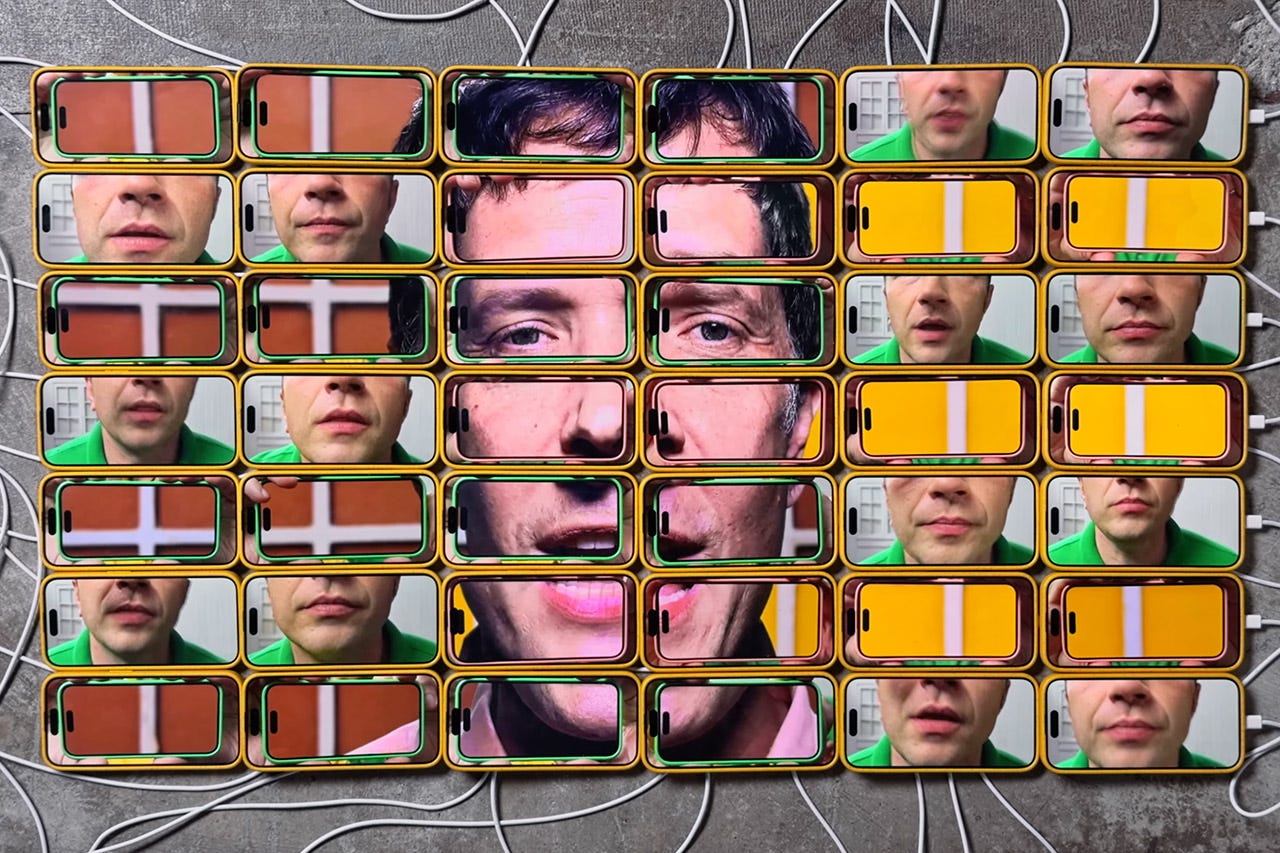
scale/complexity: when something feels larger than life. This can be literal when something is very large, or the opposite, when something is very small but very detailed (and feels massive in scale in the details). This can also come from more abstract places, like when something represents a lot of people or an effort that goes beyond one person.
surprise: when something makes you expect one thing but turns out to be something else. When it "tricks" you in a way that is delightful. This can be an unusual combination of form and function, of material and object, or of depth and simplicity.

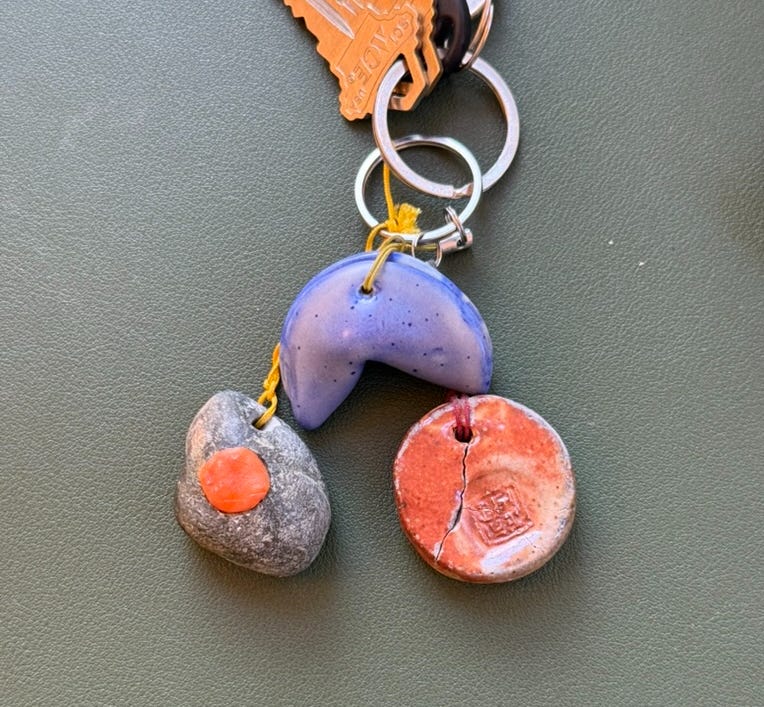
I've found these feelings in everything from a pigeon on the side of an escalator to famous pieces worth millions of dollars to temporary found sculptures made by friends. I think everything carries the potential for feeling—our job is simply to activate it.
But beyond the initial engagement, it takes more to really engross someone, to keep them coming back. I don't mean this in the way that social media platforms or addictive video games trick you into coming back through dark patterns. I mean things that feel so compelling that you naturally want to come back without any sort of manipulation. Like how I'll do the same walk through Golden Gate Park every week, because there's always something new to notice, a new friend to make, or how you keep wanting to go back to your favorite restaurants, or go back to that same photo over and over and over.
Bill Hayes in Insomniac City talks about how every once in a while, a piece of art (he talks about it in the traditional sense of painting or other art object in museum) will become yours, in a way where it feels like you own it and compels you to continue revisiting to explore its depths. I think there's certainly a kind of magical and spontaneous "matching" that happens with pieces, but you can also design things in a way that invites for this kind of relationship. In my opinion, the best, most effective kinds of art are the ones that stay with you in this way—that impart a feeling onto you that has lasting power.
play: things that embrace play and fun have an open-endedness that makes them feel endless. It entices you to keep exploring to discover all the combinations of secrets embedded in this world. Neal's infinite craft, nolen's one million checkboxes,
life: something that feels alive, in that it has a life and rhythm and flow of its own also evokes this sense of endlessness through constant evolution. This can manifest through the continuous involvement of new people, some personal meaning (nostalgia) that you nurture with the work, or an ecosystem that continually evolves.
use: quite obvious but something that provides daily utility turns out to be something that people will come back to! At its most basic, I think about the Notes app on iPhones—simple, immediate, fast, it gives the sense that it will always work. These tools almost become an extension of our bodies at some point, as they become second-nature to use. I don't have to consciously think about how I will text my friend to coordinate hanging out—I just do it automatically.
I contemplate these qualities on my walk this morning. My mind is in high gear, laser-focused on preparing for a show in June. It's the first time I'm installing several interactive physical works, and I'm worried about how the public will respond to them. I quietly rank my works on the different qualities listed and compare them to the works that inspired me at the shows I went to. Will they engage the public? Will they engross them? What if their hidden worlds don't get discovered?
At a Pioneerworks show, I watch the interactions between children, their parents, and the art. There is a fountain set at floor level with phones suspended in copper pipes and water dripping down the phones to the bottom. I watch a young girl point at it and reach out to touch it. Her mom quickly says "no!" and tells her it's not for touching. They move on, and another young girl approaches. She starts splashing the water, touching the phones, swiping and sliding. To be fair, they do look very enticing, and I empathize with her curiosity. She continues her exploration up to the pipes and tears off one of the pieces. The flow of water breaks. They leave—I tell a docent about the broken piece. The artist reattaches it a few moments later. She seems unfazed by the interruption.
I feel conflicted witnessing these two scenes. On one hand, I don't believe in precious art and I hate how art has become something that you can only see but not feel—how we've been taught that these cultural artifacts must be considered from a distance rather than directly experienced, but I can imagine the rise of indignation in my chest if it was my piece that had been broken. What does a fine art work that functions as a toy look and feel like? What is something that resists destruction, that reveals through direct experience, even to a child, new worlds.
I read an art critic's review of the show, in which they criticize the finish and sculptural quality of the works. They say "this piece feels incomplete, more like a study than a finished work." I wonder if my works will be considered studies. I wonder what's wrong with a study and whether any work is really ever finished.
There are certain qualities of drafts, studies, in-progress work that are inaccessible to the finished work that is often prized by galleries. We are constantly making and remaking ourselves—I think we respond more openly, willingly, enthusiastically to things with a rough edge to them. They have a humbling presence. My neighbor's garage sale has a human quality that invites me to meet them that a sleek vintage shop would not. I slip out a secret hope that my works are interpreted through similar views.
I remind myself how every work of art you make stops being yours once you put it out into the world. I think about this section from an interview with Walead Beshty:
"...An assistant I had while I was teaching at the School of the Art Institute told me that there were a handful of people who had started making folded paper photograms after I gave a talk there. He seemed annoyed, and I think he expected me to be annoyed by it as well, but I found it exciting that someone borrowed something from the work. It meant that there was something to it that was worth borrowing and could be put to someone else’s use. I mean, once you make something and put it into the world, it isn’t really yours anymore. It’s part of a larger conversation, and the best-case scenario would be that it would be expanded upon, applied to other circumstances or thought processes."
If I care about everyday art, perhaps it's imperative that I am not precious about my art, that I treat every work as a study for the next one, that I trust every interaction with a person is an opening for change that lasts.
updates
walking on the internet together: Kristoffer and I hosted a wonderful online workshop, trawling spaces on the web.
demo 2025: if you’re in new york come to the show I mention starting June 4-22! and after you interact with my piece, email me your thoughts :)
everyday @ internet archive: thanks to tiat, the Internet Archive, and ash for making this all happen, I got to ask 300+ people to treat their phones like hot rocks and toss them with each other for a minute. Highlight video to come!
This dispatch was sent to 1438 inboxes. My writing is always free and open, but I am independently funded and appreciate any support you can offer. Consider sharing this with a friend and becoming a patron for the warm & fuzzy feeling of supporting an indie artist (and access to the community & works-in-progress) .
Thank you to the 24 people who supported my independent work with a monthly sponsorship last month: Shaobo, Janvi, Raymond, Jacky, Sunil, Jess, Tim, Sarah, Jon, soft networks, Nikhil, Alejandro, Andy, Caro, Riley, Charles, James, Crystal, Dan, Jonah, Rachel, Gleb, Yorke, and one anonymous donor.

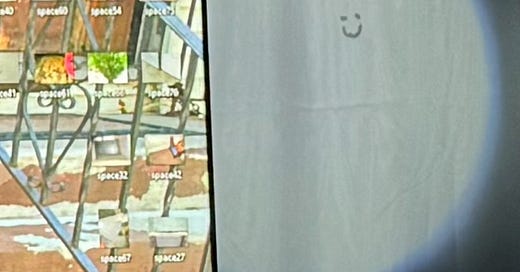


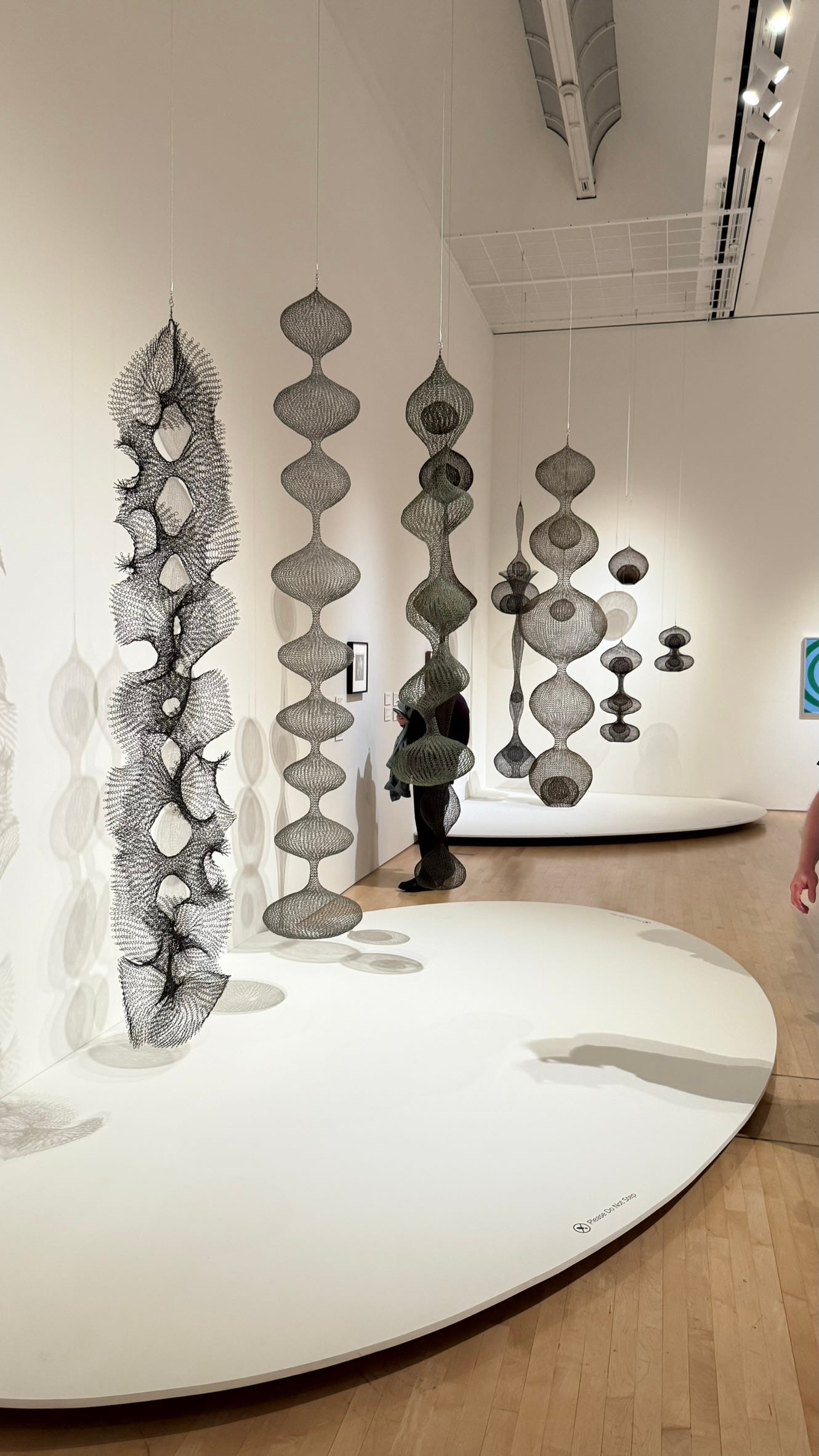
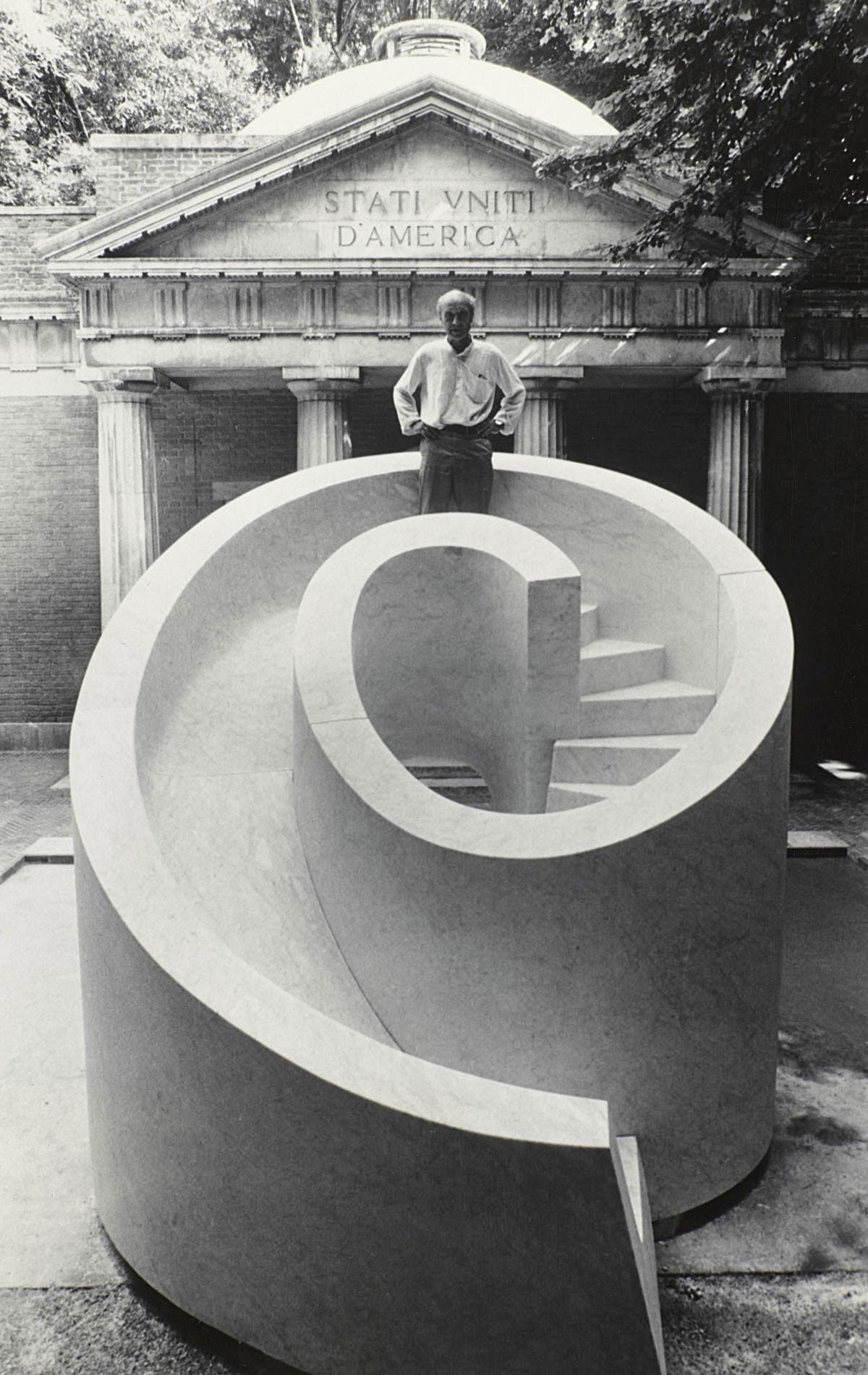




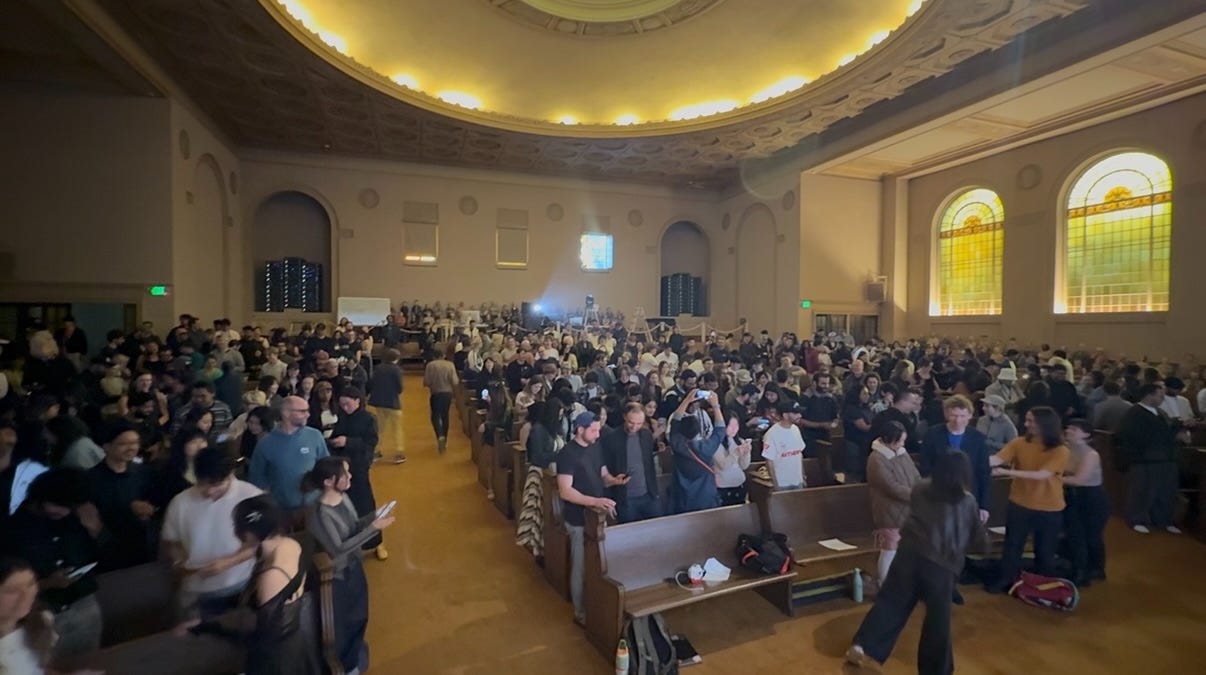
These Field notes of yours, especially this one, is very inspirational! I will definitely refer to it again.